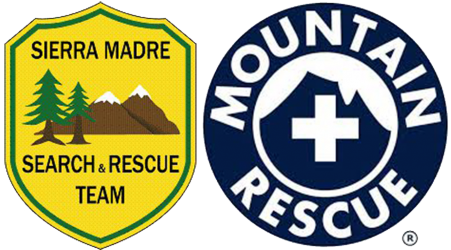Since 2024, Sierra Madre Search and Rescue has responded to several emergency calls initiated through satellite-based SOS messages. These tools provide your exact location and allow two-way communication with rescuers, often eliminating the need for a lengthy search.
No Cell Signal? No Problem.
Satellite-enabled devices do not rely on cell coverage to communicate with emergency services. Options include:
– Dedicated devices like Garmin inReach and Zoleo
– Smartphones with satellite texting (e.g., iPhone 14+ and recent Android models)
While many of these tools require a subscription, they’re typically rugged, have long-lasting batteries, and use powerful antennas to ensure reliable contact in remote areas.
iPhone and Android Satellite SOS
– Apple introduced satellite SOS texting with the iPhone 14 in 2022; it’s now available across newer models with the iOS 18 update.
– Some Android devices gained similar functionality starting in 2023-2024.
Apple encourages users to set up their Medical ID and emergency contacts in advance. This information is automatically shared when you send an SOS.
Watch: How to Use SOS on iPhone
Watch: How to Use SOS on Android
Important #1: Do not test the SOS feature just to familiarize yourself. Practice responsibly using device simulations or official tutorials.
Important #2: If your situation changes and you no longer need help, please update emergency services immediately so that rescue efforts can be canceled. You will not get in trouble for doing the right thing.
When Should You Use Satellite SOS?
The first step is recognizing you need help. Activate the SOS feature if:
– Someone is injured, incapacitated, or lost
– You’re unsure of your location
– You feel your safety is at risk
When in doubt, call for help. It’s always better to cancel later than to delay assistance in a potentially serious situation.
What to Expect After Triggering SOS
Once activated:
– Your device connects to a satellite (you’ll need a clear view of the sky—deep canyons or thick forests may cause delays).
– Your emergency message is routed to a 24/7 communication center or 911, which contacts the appropriate responders, including SAR teams.
– Stay put unless it’s unsafe. Moving may make you harder to find.
While help is en route:
– Follow instructions from the communication center
– Preserve battery life: Close unused apps, avoid unnecessary communication
– Dim your screen brightness
– Only use your phone to stay in touch with rescuers – do not text or attempt to call others
What Info to Include in Your SOS Message
To help SAR respond quickly and effectively, include:
Nature of the emergency
– Number of people in your party
– Injuries or medical conditions
– Your activity (hiking, biking, climbing, etc.)
– Any known hazards or allergies
No Charge for Rescue
Sierra Madre Search and Rescue is a 100% volunteer, non-profit, and unpaid organization. We are a proud 501(c)(3), and our mission is to keep the public safe in the wilderness. You will never be charged for requesting help from our team.

